#The Belgariad
Text
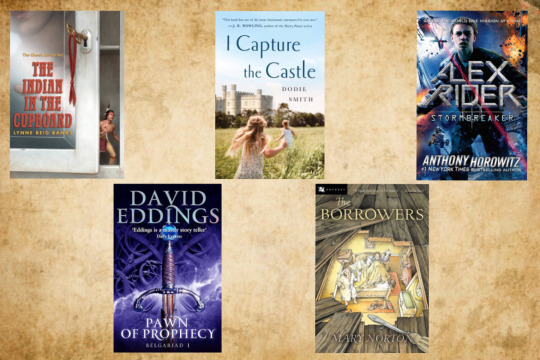

#best childhood book#poll#the indian in the cupboard#the belgariad#i capture the castle#the borrowers#alex rider#esperanza rising#the thief lord#dork diaries#heist society#amulet
89 notes
·
View notes
Text
About the "Tolkienesque renaissance"
The term "Tolkienesque renaissance" is of my own invention and creation, but it is a name I use to designate a very specific wave of fantasy fiction, or rather a specific phenomenon in the evolution of fantasy in the English-speaking literature.
As we all know, Tolkien's shadow cannot be escaped when doing fantasy. Tolkien's works being published began the modern fantasy genre as we know it today. D&D, the other big "influencer" of fantasy, would not have existed without Tolkien. The Peter Jackson trilogy began the fantasy renewal of the 21st century. Epic fantasy is a sub-genre explicitely designed after Tolkien's work.
And the massive influence of Tolkien over fantasy is the most felt in the second half of the 20th century, in English-speaking literature, through something I would call the "Tolkien cold-war". When you take a look at the fantasy books of the second half of the 20th century, you notice a fundamental clash and divide splitting it all in some sort of silent feud or discreet conflict. On one side, you have the "Tolkien followers" - as in, the authors who walk in Tolkien's footsteps ; on the other side, you have the "counter-Tolkien" offering what is essentially a counter-culture in a Tolkien-dominated fantasy.
We all know that Tolkien's success was huge in the early second half of the 20th century. The success of "The Lord of the Rings" and the "Hobbit" and the "Silmarillion" was especially important during the 60s and 70s - Gandalf for president and all that... People loved Tolkien's fantasy, people WANTED Tolkien's fantasy, and so publishers and others were happy to oblige. This began the "Tolkien followers" movement - but this beginning was a very unfortunate one, because it was one that relied on not just homage, imitation or pastiche... But in pure copy-cat and sometimes complete rip-off. Since people wanted some Tolkien, people were given LITERAL Tolkienesque fantasy. The most famous (or unfamous example of this would be the 1977 's "The Sword of Shannara" novel. This novel was designed to literaly be a simplified "The Lord of the Rings" with only a few details changed here and there. In fact, this is most of what people recall about this book - how blatant of a Tolkien rip-off it is. And yet, this book was a BEST-SELLER of the 70s fantasy, and it was a huge success, and everybody loved it, precisely because it did the same thing Tolkien did, and so you got to enjoy your favorite series all other again. Afterward, Terry Brooks, the author of the novel, expanded it into a complete series moving into much more original and personal directions, as he admitted himself that doing a Tolkien copy-paste was more of a publishing and editorial decision to make sure he would sell and settle himself in the literary landscape rather than an actual artistic project or personal desire. "The Sword of Shannara" got its own sequels, and became its own thing (though VERY reflective of what the 80s American fantasy was in terms of style, tone and content), but nowadays everybody remembers it for being the "Tolkien rip-off" in its first novel.
And yet being a Tolkien rip-off can sell well, and if the "Shannara" series hadn't proved it, "Dungeons and Dragons" did, since its first edition in the late 70s went as far as to just take Tolkien's inventions such as orcs, Balrogs and hobbits, and include it in its game. The same way the Shannara series then found its own tone and content, through the successive editions Dungeons and Dragons then began to build a world of its own... But it confirms what I said: it was the era of the Tolkien rip-offs.
In front of these "Tolkien followers", which were back then "Tolkien imitators", there was another movement that drove fantasy forward - and it was the "counter-Tolkien movement" so to speak. Works of fantasy that willingly chose to depart from Tolkien's formulas and archetypes and tropes, to do their own thing. Sometimes they did it out of an actual dislike of Tolkien's books: for example the "Elric Saga" was created because Moorcock hated the paternalist, moralist tone of The Lord of the Rings, and so he countered Tolkien's world with a protagonist serving the Lords of Chaos, using a soul-sucking evil sword, last remnant of an empire of cruel, decadent and demonic elves, in a tragic world doomed to endless falls and oblivions... (Though, ironically, Moorcock would end up initiating a genre of dark fantasy that Tolkien himself had explored in his unpublished texts...). Others did it not because they disliked Tolkien but wanted to prove you could do something else: for example Ursula Le Guin admired and appreciated Tolkien's works, but she was fed up with all the imitators and pastiches, and so she created her "Earthsea" world. No European setting dominated by white people, but an archepilago of islands with dark-skinned characters. No big war or political manipulations, the stories being about about the life, journeys and evolution of individual people. No sword-wielding hero or horse-riding paladin, but wizards and priestesses as the protagonists. No big prophecy about the end of the world, flashy magical sword or evil overlord ready to destroy the universe (well... almost), but rather philosophical and existential battles doubling as a fight against oneself and one's very existence...
This counter-Tolkien genre definitively peaked with the other big name of "dark fantasy" and what would annonce the "grimdark fantasy" a la Game of Thrones: Glen Cook's The Black Company.
But what about the titular "Tolkienesque renaissance" I speak of?
Well, if the "Tolkien followers" had only done bad rip-offs, it would have never lasted, ad the "counter-Tolkien" movement would have won. In fact in the 80s, it almost did! Tolkienesque fantasy was thought of as cliched and stereotyped and overdone and dead. People had enough of these blatant-rip offs, as the hype of the 60s and 70s had died out, and the 80s folks turned to other forms of fantasy - such as The Black Company (Dark Fantasy), or Fafhrd and the Gray Mouser (Sword and Sorcery), or various parodies and humoristic fantasies, but all far from the "epic fantasy". And yet, something happened... The "Tolkien imitators" became "Tolkien followers" or rather "Tolkien reinventors", and began the "Tolkienesque renaissance".
The Tolkienesque renaissance is this group of fantasy authors, most predominant in the 90s though they began their work by the late 80s, that decided they would make the Tolkienesque fantasy live on. Not just by copying it as their predecessors did, a la Shannara, no. But by reinventing it, freshening up the old ways for a modern audience and new times. They took back all the key ingredients, and the famed archetypes and the usual tropes of the epic fantasy a la Tolkien, and they reused them without shame... But in new ways, with twists and turns, playing on the codes of the genre, while carefully avoiding the cliches and stereotypes of the time. Giving what people liked about epic fantasy, while also producing new works that felt fresh and went into opposite directions - taking lessons from the counter-Tolkien movement.
It is commonly agreed that the series that began this renaissance was David Eddings' The Belgariad, published between 1982 and 1984. Just a look at the Wikipedia article mentions this best-selling, very influential fantasy series was the "last gasp of traditional fantasy, and the founding megasaga of modern fantasy"... Now, I actually have to disagree with Wikipedia's words. I do not consider it a "last gasp of traditional fantasy" since it already began the Tolkienesque renaissance and thus a new generation of fantasy ; and the other qualificative is ridiculous since modern fantasy already began with Tolkien, and the Belgariad is not a mega-saga, but just five average-sized books. But the idea of it being a link between an older and a newer generation of fantasy books is very true.
While The Belgariad has to be put first, second comes Robert Jordan's The Wheel of Time, which probably is the most famous of the Tolkienesque renaissance works of the 90s and became this behemoth of fantasy literature. And to make a trilogy of iconic works, I will add another 90s success: Tad Williams' "Memory, Sorrow and Thorn". Another iconic work of the Tolkienesque renaissance, though lesser known today than the Belgariad or The Wheel of Time - which is a shame, because Williams' work as a huge and heavy influence on a famous fantasy story of today... "A Song of Ice and Fire", which takes a LOT from "Memory, Sorrow and Thorn" (I even call this trilogy the "missing link" between LotR and ASoIaF).
The thing with these Tolkienesque renaissance series is that today, to an audience that was nourished by Tolkien and D&D and Pratchett and other things of the sort, a superficial glance might make them seem like "yet other rip-offs, yet other stereotyped, yet other clichéed" fantasy series. You just have to see the reception of the first season of "The Wheel of Time" tv series - here there was a clash between two generatons of fantasy.
And what these people who take a superficial glance will miss is how inventive and fresh and interesting these series felt back then because they played with or subverted the tropes and the codes of the traditional fantasy. They all played by the usual archetypes - you have an everyman young chosen one, a magical mentor who must "die" at one point, an evil overlord in an ominous half-disembodied state, evil black-clad horsemen going after the hero, elves and dwarves and trolls... And yet, these series twisted these same ingredients they used to bring new flavors.
Let us take the Belgariad briefly, to see how the whole Tolkienesque formula was subverted. Like in Tolkien you've got an order of wizards appeared as elderly, bearded men - but here, they are definitively human beings unlike the otherwordly Istari, and their appearance is explained by them being the disciples of a god that likes to take the appearance of a bearded old man, and who by divine influence made them look like him. You've got a dangerous, all-powerful item the big bad is seeking to destroy the world - but here it is no evil, or corrupting thing. It is rather an item dangerous because of the sheer scope and range of its power, and the temptation isn't becaue it is "evil" power, but just because it is a power so massive it can break the world. You've got a missing king with a stewart/regent holding the throne for him until the lost heir returns - but when said heir returns, the stewart/regent is no evil vizir or scheming usurper, and gladly offers back the throne to its legitimate owner. Belgarath, your Gandalf-stand-in, is far from being the dignified guide and noble mentor of Tolkien, as he is a half-werewolf drunkard that hates any kind of official ceremony or garb and prefers running through the woods or rolling under a table in taverns. And while everything is designed as a Tolkienesque setting, you've got no elves or dwarves or orcs - but humans. And that's a big change compared to more traditional 80s fantasy (like D&D or the Krondor series or Shannara). You have your Nazgûl stand-ins, but they're humans. You've got your Istari, but they're humans. You've got your dwarves equivalent, but they're humans. You've got your orcs equivalents, but human too. And it is shown that it is all a human vs human combat, despite being a world of magic and gods, placing some relativism into it all. (Though the fact they decided to subvert the Tolkienesque good vs evil wordlbuilding by having humans on both sides did cause other aspects of the series to age badly but that's another topic).
I can go on and on but I think you see my point - and this same subversion can be found in the other two series I talked about.
The Wheel of Time begins with the chosen one going on a quest... But which chosen one? That's the problem - there are multiple candidates, and so we begin with a guessing game. And the Aes Sedai are clearly an answer to Tolkien's Istari - but all women instead of all men, and much more numerous and pro-active. As for "Memory, Sorrow and Thorn" we have benevolent trolls that are actually more akin to Tolkien's dwarves and have some Inuit-influence, while the Tolkienesque-elves turn out to either be the big bads of the series and the evil guys ; or to be sheltered, useless side-characters that are not helping anyone and cause more problems than anything (I'm exaggerating a bit here, but you get the subversion). Spoilers - but the Galadriel equivalent literaly gets murdered during her second actual appearance, to make it very clear what kind of subversion we are into.
Because this was the game of these books - and the reason they were such huge successes. It wasn't about avoiding or setting themselves free from the tropes and code and archetypes of the genre. Rather it was about reappropiating them, reusing them, twisting them and modernizing them in order to get rid of the stale cliches and frozen stereotypes. It was all a game of imitation yes, but also of derailing - a subtle, discreet, derailing so that everybody got on board of the same type of train, but said train took different tracks to another landscape and worked on a different fuel. (If it makes sense?). It is a game of subtle twists - but unfortunately it is often this subtlety that makes these series overlooked, as people just focus too much on what is identical/similar and not much on what is different... Despite the differences being key here in this effort of renewing what was a dying style. Placing back these books in their context highlights even more how "fresh" they felt back then.
I have one specific point that illustrates this, but I'll need to write a whole post for it...
#fantasy books#fantasy literature#tolkienesque renaissance#tolkien#the belgariad#the wheel of time#memory sorrow and thorn#fantasy series#the elric saga#earthsea#the black company#lord of the rings#lotr#tolkienesque fantasy#dark fantasy#epic fantasy#fantasy cliches#fantasy tropes#the evoluton of fantasy
50 notes
·
View notes
Text
Botanic Tournament : Main Bracket !
Round 1 Poll N

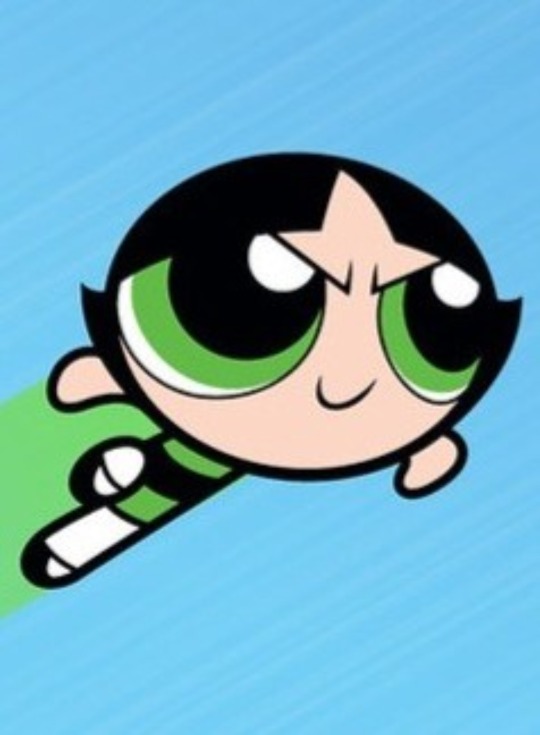
Commentary by Adara's submitter :
This might be cheating because the flower was named after her but :D
TFW your cousin who you've known for a month creates a flower for you out of a stick and some grass and then it turns out to be a miracle medicine
Why this is not cheating, actually

(Buttercups)
#botanic tournament#tournament polls#round 1#adara#the belgariad#david eddings#buttercup ppg#ppg buttercup#ppg#buttercup utonium#powerpuff girls#powerpuff buttercup#powerpuff girls buttercup#buttercup powerpuff girls#the power puff girls#power puff girls#the powerpuff girls#bookblr
27 notes
·
View notes
Text
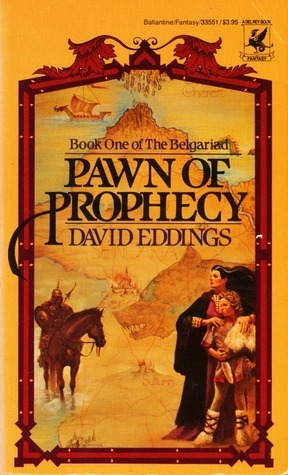
vote yes if you have finished the entire book.
vote no if you have not finished the entire book.
(faq · submit a book)
13 notes
·
View notes
Text

29 notes
·
View notes
Text
So so sorry guys going into a minor obsession with a mediocre 80s fantasy series that I hold dearly because it was one of the series my dad raised me on. But also seriously I should not be allowed to consume media because there is ZERO reason to make ocs for an old book series no one knows.
#the belgariad#the mallorean#so so sorry to my followers youre lucky theres so little fan content for this series or i would flood your dash
19 notes
·
View notes
Text
For all the writers out there: what are your biggest influences- books, tv shows, movies- that shaped the way you write?
For me, Patricia C. Wrede's Enchanted Forest Chronicles, David Eddings' Belgariad, as well as Rise of the Guardians and Babylon 5. Gravity Falls is in there too, and How to Train Your Dragon, both the books and the first movie.
#writeblr#writing#rise of the guardians#writer stuff#the belgariad#babylon 5#enchanted forest chronicles
16 notes
·
View notes
Text
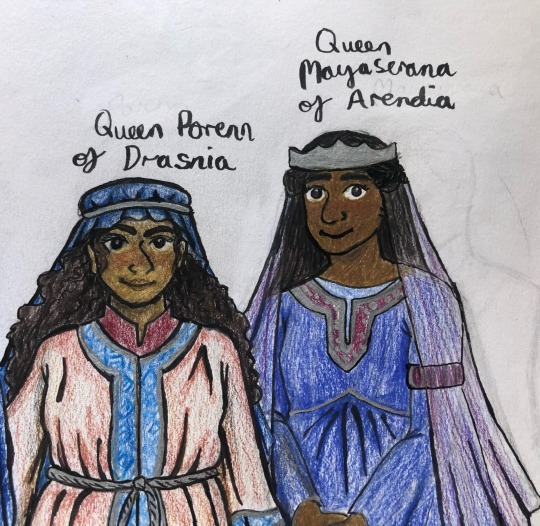
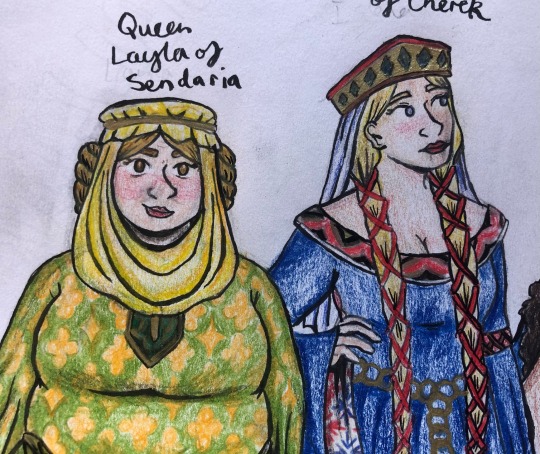
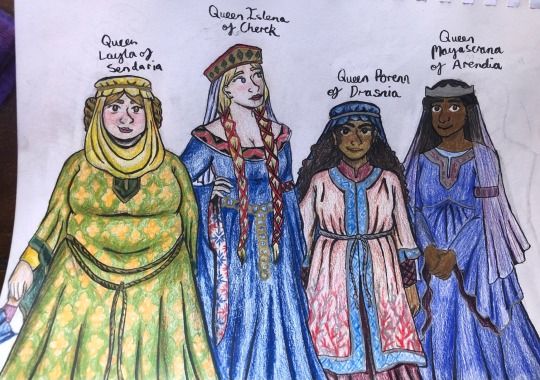
More Belgariad character art, this time of some of the queens! I absolutely adore them, and wanted to hash out how I imagine them on paper. The clothes are only semi-historical— I took inspiration from English women’s fashion of about 1066-1200 according to John Peacock’s “Costume: 1066 to 1990s” (and remembered how much I love all the various medieval head coverings) but also exercised a fair amount of creative license since they are characters from a fantasy world.
#art#my art#the Belgariad#belgariad#Layla of sendaria#islena of cherek#porenn of drasnia#mayaserana of arendia
60 notes
·
View notes
Text

Polgara from David and Leigh Eddings' Belgariad/Malloreon Series for @xerohourcheese
created using the screenshot of Lilith from the owl house below as template

#polgara the sorceress#polgara#belgariad/malloreon series#david and leigh eddings#the belgariad#the malloreon#my art#artists on tumblr
23 notes
·
View notes
Text
Writing Patterns (tag game)
Rules: list the first line of your last 10 (posted) fics and see if there's a pattern!
I was tagged by @iwritesometimes Thank you this was so much fun!Ten fics is a good long way back, the oldest of these were posted in 2021.
It was little known, and hardly at all marked in the annals of Gondor, for all that it was etched with remarkable clarity in Aragorn’s memory, that for three short, yet terrifying, hours the hobbit Peregrin Took had held full sway of the seating chart for the King’s wedding (Lord of the rings, Gen)
2. Billy had been nursing his slug of whiskey in the saloon long enough that it had grown warm from his hands as he turned the glass round and round (The Magnificent Seven (2016), Billy/Goody)
3. ”But why do I have to come?” Johnny whines from the backseat like a five-year old, as if going to a Christmas party with free booze was some sort of unimaginable hardship just because it required a button down, but Amanda could ask herself the same question (unfinished Kobra Kai fic from Morgue files)
4. Barak’s quarters in the Rivan citadel were large and comfortable, they were close to Anheg’s as befitted the Earl of Trellheim and the king’s cousin (The Belgariad, NSFW, Silk/Barak)
5. “Do you have your hat, and your allergy pills? And hand sanitizer in those tiny little bottles?” (Glass Onion, NSFW, Benoit Blanc/Phillip Blanc)
6. “You are bringing Lan Wangji to Vulcan for Christmas?” Jiang Cheng said, pausing with his glass of juice halfway to his mouth. (The Untamed X Star Trek, Lan Zhan/Wei Ying NSFW)
7. After their midnight revelations Billy had optimistically imagined that as soon as Sam had closed the door behind him he and Goody fall on each other like those insufferable couples at airports, or possibly wolves at the zoo feeding time (The Magnificent Seven (2016) Billy/Goodnight).
8. Once the dust had settled and humanity had come to the conclusion that, by and large, it had survived there had been months of celebrations, galas and press tours (Pacific Rim, Herrman Gottleib/Newton Geiszler)
9. The first time it happens it's on the boat, in the confusion of the shark returning, the noise of the barrels thumbing against the hull and water rushing in and everyone running around (Jaws, Martin Brody/Matt Hooper).
10. Ward spends the fall holiday on New Penzance. (Moonrise Kingdom, Scoutmaster Ward/Sharp).
I dont really know if I can see a pattern, I would say that since I am pretty much a situational comedy writer I tend to start with the set up for the situation as soon as possible. In four the whole premise of the fic is in the first sentence so I guess I start with exposition and when I have the table set so to speak its easier to get off the ground.
I tag: @poemsingreenink @thesummoningdark @lazaefair @fontainebleau22
#writing#tag game#ten first lines#the magnificent seven#star trek#the untamed#jaws#glass onion#moonrise kingdom#the belgariad
7 notes
·
View notes
Text
no Glass Onion spoilers, but let me just say that Janelle Monáe continues to be my never-wavering fancast for Polgara, if a filmed adaptation of the Belgariad was ever made
#Glass Onion#Janelle Monáe#Janelle Monae#Polgara#The Belgariad#David Eddings#with Laurence Fishburne as Belgarath#I can see it so clearly in my head#the way he would smirk at her and she would give him a flat unimpressed look and call him Old Wolf#also: Diego Luna as Silk#someone please make this movie and/or series#I really need it to exist outside of my brain
73 notes
·
View notes
Text

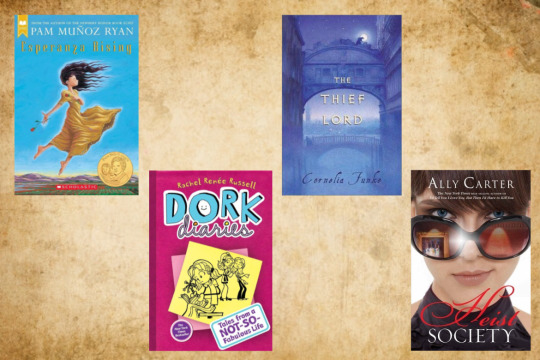
#best childhood book#poll#preliminary round#the indian in the cupboard#the belgariad#ramona#alex rider#the borrowers#esperanza rising#the thief lord#dork diaries#heist society
188 notes
·
View notes
Text
he Echoes of The Belgariad: Eddings’ Influence on Modern Fantasy
Once upon a time, as all good stories start, in the small town of Spokane, Washington, a man by the name of David Eddings put pen to paper and began to weave a tale of prophecy, magic and, most importantly, a farm boy named Garion.
A tale that, unbeknownst to him, would shape the course of modern fantasy literature.
This tale?
“The Belgariad.”
The Chosen One
Now, I know what you’re thinking.…

View On WordPress
#A Song of Ice and Fire#Brandon Sanderson#Chosen One trope#David Eddings#fantasy literature#Garion#George R.R. Martin#Harry Potter#J.K. Rowling#Jon Snow#magic orb#magic system#Mistborn#modern fantasy influence#narrative impact.#prophecy#Spokane#The Belgariad#world-building
14 notes
·
View notes
Text
Polgara: I don’t have a resting bitch face. My bitch face is always on duty, ever vigilant. My bitch face will rest when its work is done.
#the belgariad#incorrect quotes#incorrect belgariad quotes#polgara#polgara the sorceress#source: unknown
76 notes
·
View notes
Text
Gender Tournament: Round 2 Match 3

Tournament master post
5 notes
·
View notes
Text

The Riven King and Queen
Been reading a new series with my husband, and I gotta say, he really has gotten around the fantasy genre... Shout out if anyone's read the Belgariad and say hi to Garion and Ce'Nedra!
#art#the belgariad#garion#ce'nedra#i have no idea if tags will get this anywhere#but i was proud of it#so im posting it
73 notes
·
View notes